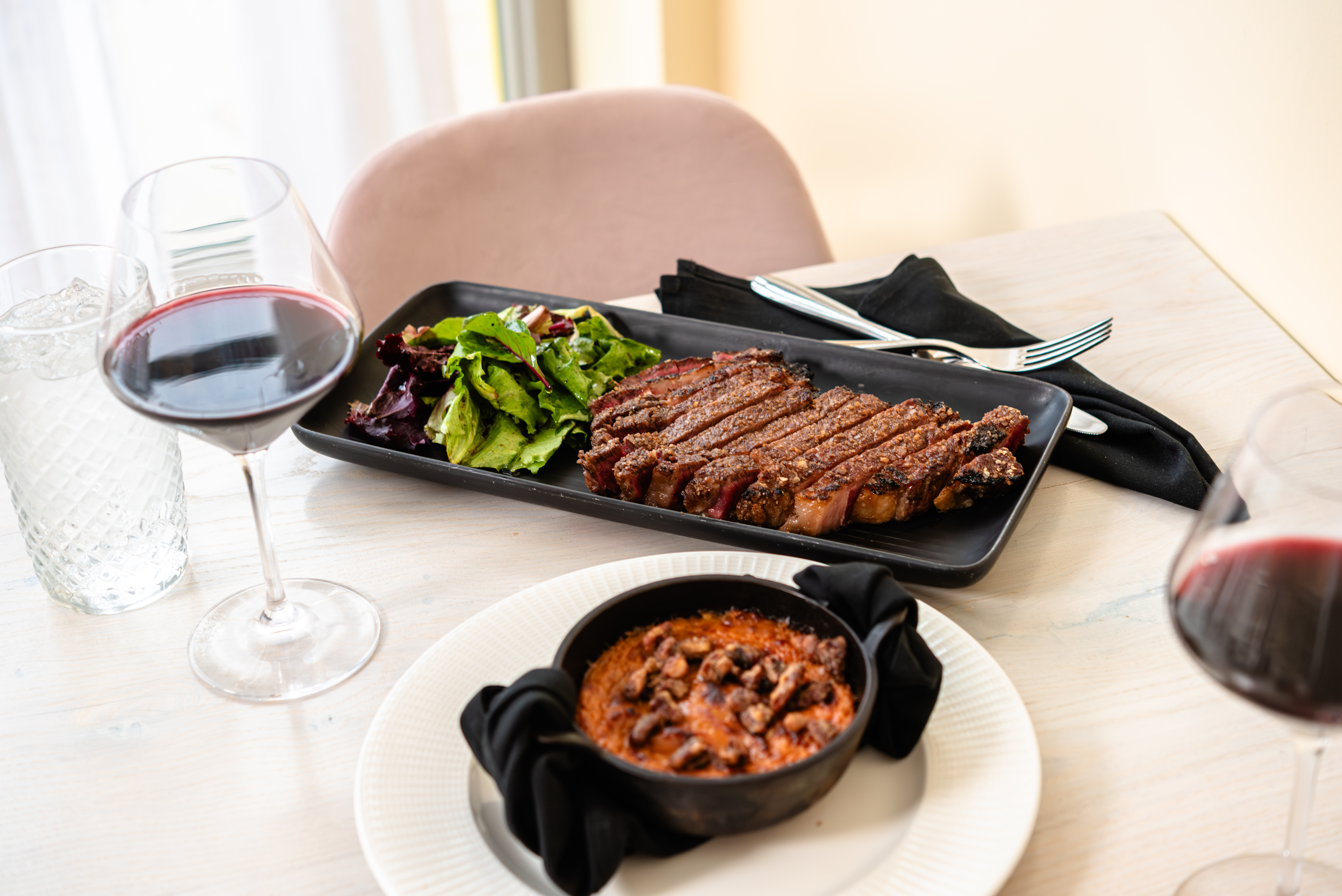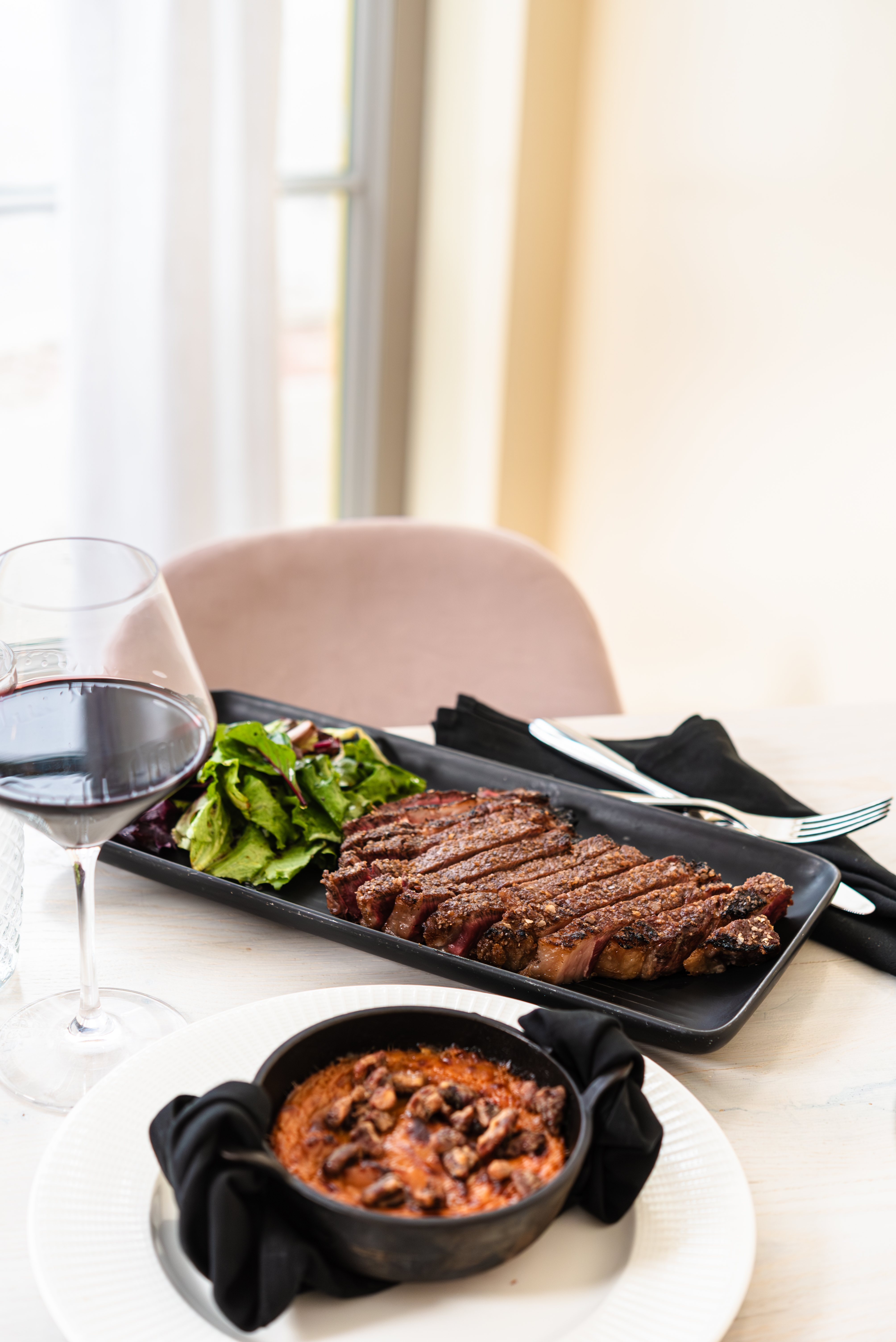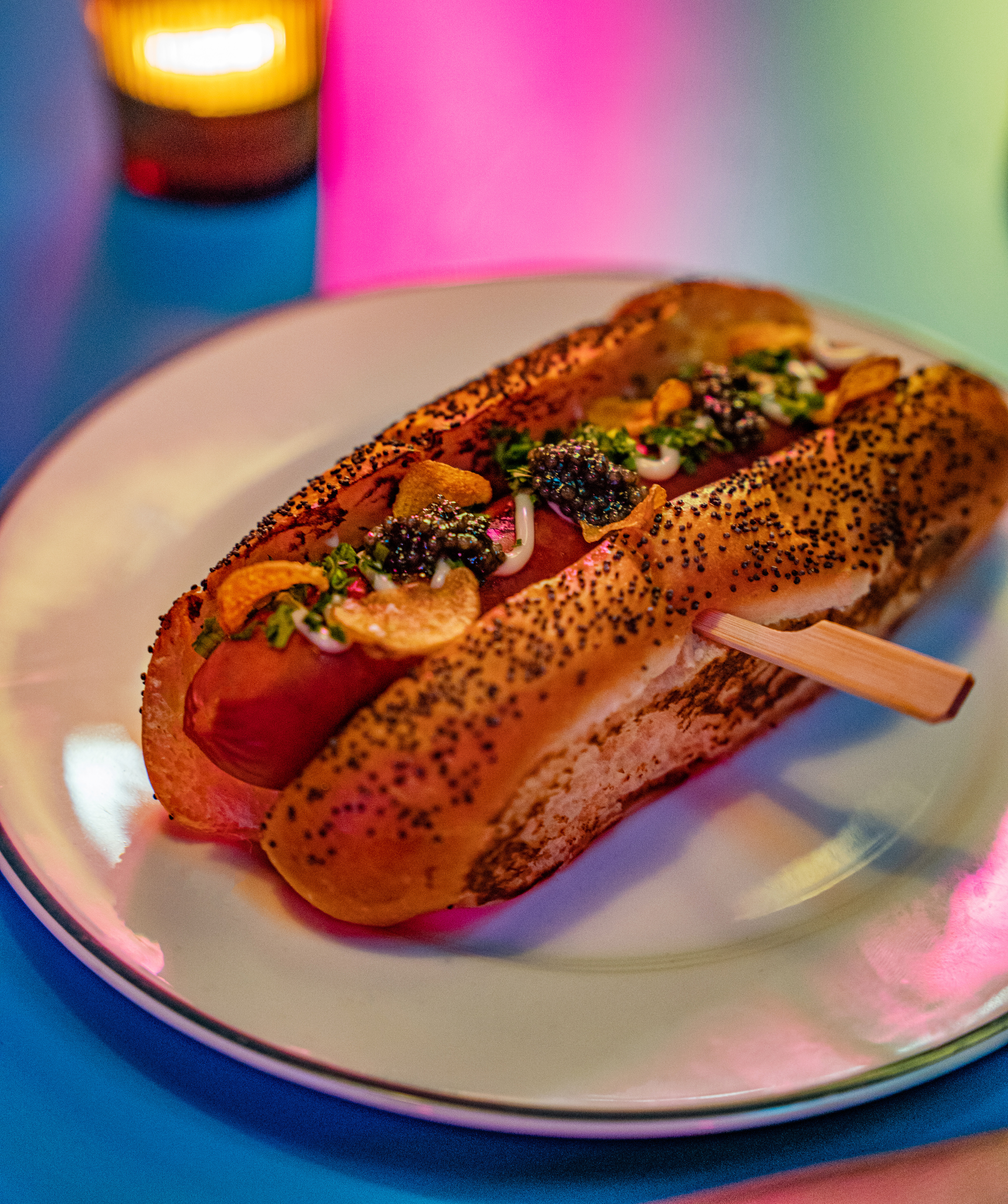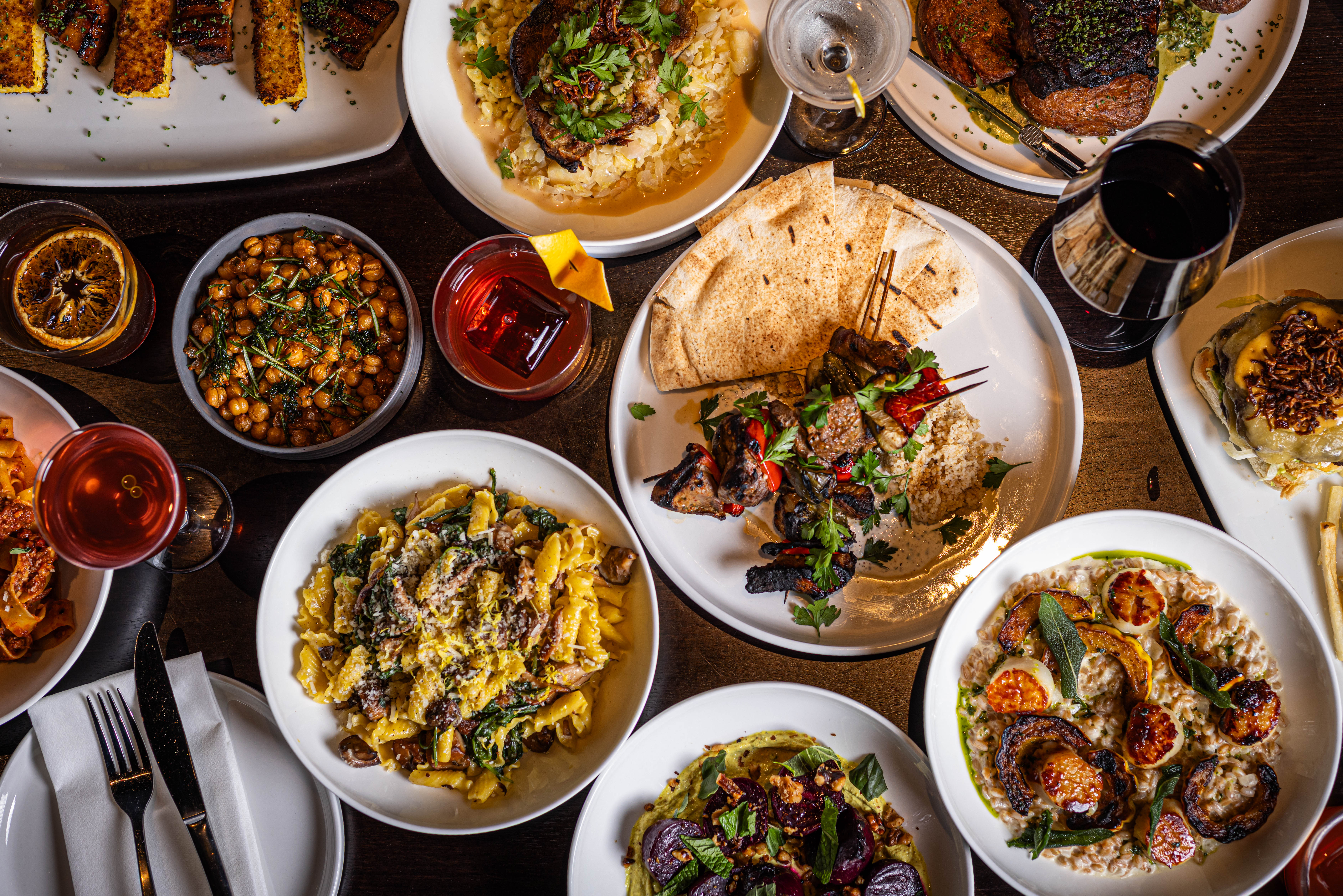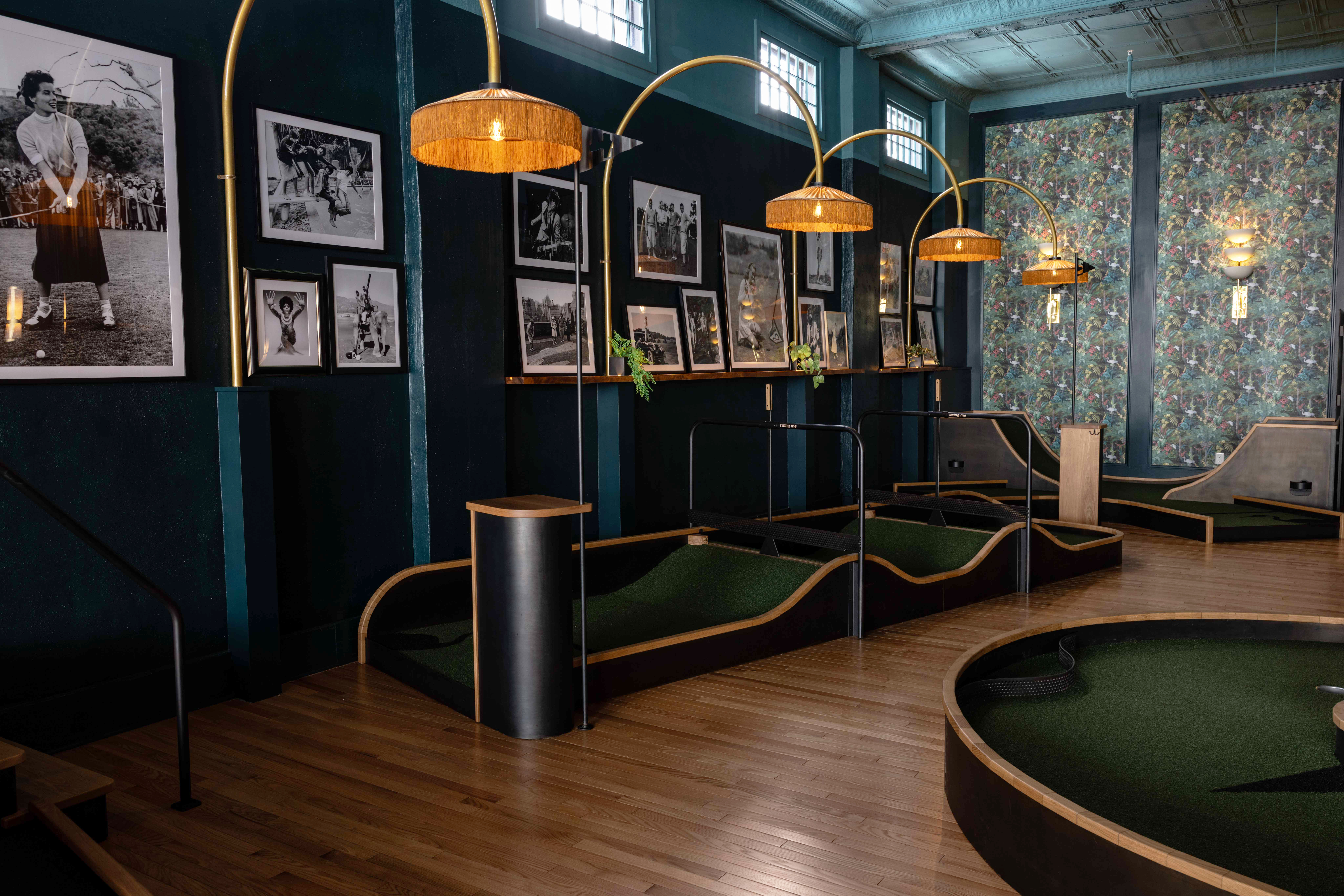There's no such thing as a cup of pho. By definition it's soup, but in practice it's a main course served in a tureen-sized bowl. It is characterized by a long-cooking and intricately seasoned beef broth, flat rice noodles and the last-minute addition of meat, fresh vegetables and herbs.
Pho, pronounced more like fuh, only softer and with a slight up-lilt at the end, sort of like a question, is the national dish of Vietnam, but only since the 19th century. Some say pho reflects a marriage of Chinese and Vietnamese culinary traditions. Others suggest that it's the result of the French influence. To bolster the case that pho is a child of consommé and colonialism, food historians cite the similarity in sound to the French word feu (fire) and in ingredients to the dish pot-au-feu (beef stew).
Whatever its origins, pho is Vietnamese comfort food, eaten for breakfast, lunch and dinner.
There was a time when it was hard to find pho in Cleveland or almost anywhere else in this country. Now, it seems as if the tasty stuff is everywhere. Whether you live east or west of the Cuyahoga, there's a pot simmering somewhere on your side of town. In Vietnam, pho is sold at street vendors' stalls, but here it's an indoor experience served at restaurants that range from the extremely small and unadorned to the large, lovely and stylish.
The stock for pho is made with beef bones, with marrow bones and oxtails the favorites. Some cooks incorporate hunks of chuck roast or brisket. The unique flavor is achieved by adding broiled or grilled ginger and onion; pan-roasted star anise, cinnamon stick and whole cloves; and letting the mixture bubble gently for five to seven hours. Fennel seeds, shallots, peppercorns, sugar or bay leaves might make an appearance, depending on who's in charge of the pot. Many chefs replace salt with fish sauce, a pungent brown liquid produced by fermentation. When the stock is strained, the resulting broth is golden, nourishing, aromatic and delicious. Noodles are added just before serving.
Variety, explains Michael Hong, owner of the Siam Cafe, is in the meat. "We use paper-thin slices of very fresh raw steak that cook in the hot broth, well-done pieces of other cuts of beef like brisket, meatballs, tendon and tripe, alone or in combination. In Vietnam, this soup is not an appetizer or a first course: It's a meal. That's why the bowl has to be big," he says. "If I tried serving my Vietnamese customers a small portion, they would be shocked and angry."
There's a do-it-yourself element to eating pho. Every serving is always accompanied by a side order of crisp, raw mung bean sprouts and leafy stalks of Asian basil, a more peppery strain than the Old World one with which we're familiar. This is southern Vietnamese style and these are fundamental ingredients, not just garnishes. Proper etiquette requires tearing basil leaves into small pieces and adding them periodically along with handfuls of sprouts so they don't get soggy.
Other mix-and-match options that may appear on the table with your pho include scallions; thorny cilantro (ngo gai), also called saw leaf herb or long coriander, which is recognizable by its oval shape, green color and serrated edges; slices of fresh hot chilies; and lime wedges. For further modification, there are special condiments: bottles of hot red chili paste (also called Rooster Sauce after the most popular brand) and brown nuoc mam cham — salty, pungent fish sauce mixed with garlic, lime juice and sugar. Both are as common in Vietnam as ketchup is here and are used the same way. Soy sauce or thick, dark soybean paste may also be part of your table setup.
Once you've customized your order, use all means necessary — traditional little Asian ladles, chopsticks, forks, spoons and even drinking directly from the bowl — to get every last drop and bite.
#1 Pho
3120 Superior Ave.,
Cleveland; (216) 781-1176
This newly renovated double storefront is the Cadillac of pho houses in town, all grown up and ready for the big time. Co-owners Danny Nguyen and Thang Nguyen (not related) have created a sleek and glossy dining space that is all polished wood and golden light through the tall front windows. Unlike most mom-and-pop pho eateries, the furnishings and decor here are new and tables well spaced, yet the prices are still pocket-change cheap. Service is fast, attentive and helpful.
There are seven versions of pho on the wide-ranging menu, including chicken (Pho gà) and the trusty Pho Dac biêt, which features a little of everything from the cow: rare beef, brisket, tendons and beef tripe. A small bowl will set you back $5.95, a large bowl $6.95. (Be forewarned that in terms of pho, "small" is a relative term. Come hungry.)
Twelve other soups share the menu, among them the intriguing Canh chua ca, a sweet-and-sour catfish soup with tomato, pineapple, sprouts and celery. A pair of Cha giò (fried spring rolls) filled with ground onions, mushrooms and pork make a nice accompaniment to a small order of pho, washed own with a cold glass of Nuoc cam (a fresh-squeezed orange drink miraculously free of pulp).
Asia Tea House
3126 St. Clair Ave.,
Cleveland; (216) 621-1681
Remember the lunch counters at Woolworth's? The restaurants were nestled right inside the stores, making it easy to pair two pleasurable activities: shopping and eating. This 30-seat restaurant offers a similar experience, Vietnamese style. It's tucked inside the Asia Food Co., a market with a wonderful selection of products from Vietnam, China, Laos, Korea and Thailand; fresh meat and live fish; foods prepared on the premises, with the largest variety on weekends; plus an Asian pharmacy; an acupuncturist; and a Western Union desk. The dining area at the back is plain and paper-napkin simple, and the menu is short but oh so sweet.
There are three versions of pho: one with well-done beef, another with rare beef and a third, Pho Dac biêt, featuring meatballs, tripe, tendon and slices of beef. A fourth, Bún Bo Hue, is a hot and spicy take on the beef-based broth that includes slices of a traditional pork sausage that looks a bit like bologna.
There are two other delicious and satisfying soups, similar to, but not quite the same as, pho. They're made with roast duck and round rice noodles instead of the wide flat kind, and Alex Duong, whose family owns the place, says both are especially popular with Chinese customers. A regular bowl of any one of these soups is big, and the large portion gives new meaning to the term super-sized.
Also featured here, and almost nowhere else in town, are Hong Kong-style pork, duck and chicken.
Chinese Village Restaurant
13359 Madison Ave.,
Lakewood; (216) 228-0110
Despite the name, the menu here is split between Chinese and Vietnamese dishes, with more than 40 Vietnamese items. Owner Van Nguyen and her mother opened one of the first Vietnamese dining spots in Cleveland. "I learned everything from my mom," says Nguyen, who was a classical opera singer in Vietnam (her husband was a ballet dancer). When her mother retired 11 years ago, Nguyen opened her own restaurant on Madison, where she now serves Banh xeo chay (vegetable crepes) and other specialties of her homeland to purple-haired Madison Village hipsters.
Decor is minimal in the clean white and green dining room, which seats about 30. Greenery fills the front bay window. Walls are nearly bare, save for two large fans and a framed color photo of the opera house where Nguyen once sang. "I miss my theater," she says wistfully, reaching up to touch it. But with two sons to see through college, she's devoted herself full-tilt to her new role, not even letting a bout with cancer stop her.
The soup list is extensive, with five different versions of pho (including a chicken noodle soup: Pho gà) and five others. Clear potato soup and a clear pork-and-chicken broth, both with shrimp and slices of roast pork, are top sellers. Pho Bo thuong features sliced brisket, ginger, onion and cinnamon. The cinnamon and ginger are a tad more evident in the broth here, making for an especially flavorful treat. Basil, lemon and sprouts come on the side, as do sriracha sauce (a hot Thai condiment made from red chili peppers and garlic) and hoisin sauce — the latter in an unmarked yellow mustard bottle, so know what you're squirting.
While we've watched many local diners devour the meat and noodles first with their chopsticks, then resort to the spoon when only broth is left, Nguyen says the correct way to eat pho is alternating chopsticks and spoon. We're still not sure, though, of the proper etiquette for retrieving the shallow, short-handled ladle that comes with pho once it's sunk below the brimming surface, which it invariably does.
Khiêm's Vietnamese Cuisine
13735 Madison Ave.,
Lakewood; (216) 228-4414
The mismatched chairs, faded striped wallpaper and other leftovers from its days as an ice-cream parlor and coffee shop suggest that this place might be on its last weary legs. Not so. Khiêm's keeps a steady parade of neighborhood regulars happy with its low prices, generous portions and great eats, especially its No. 1 seller: Pho Dac biêt.
Khiêm took over the ice-cream operation about seven years ago after being downsized from his computer job at BP America. But customers who came in for espresso or a double scoop showed more interest in the heavenly aroma of the bowl of pho he ate for lunch every day. That awakened his inner entrepreneur. Khiêm converted the business into a Vietnamese restaurant serving a limited menu of his favorite dishes, prepared in back by his sister, Tuyêt.
You can still get espresso, but the empty freezer cases are now capped by countertops. Bowls of Pho Dac biêt come in three sizes, ranging in price from $3.25 for small to $5.25 for a large. Each bowl is accompanied by a plate of basil leaves, sprouts and a lime wedge, as well as bottles of hoisin sauce and sriracha chili sauce.
It's likely you'll come away from a visit both well sated and with money in your pocket — if so, you might consider buying one of the T-shirts Khiêm has had made up with a drawing of a bowl of noodles and the slogan "What the pho?"
Long Phung
5107 Detroit Ave.,
Cleveland; (216) 651-1119
Owners Hanna To and her husband Tung Nguyen are from Saigon. He came to the United States in 1979, and she arrived in 1990. They worked in other people's restaurants for years. That's where Tung learned how to cook Chinese food. But in January 2003, the couple realized their long-held dream of opening their own place.
He runs the kitchen, preparing a large selection of Chinese and Vietnamese dishes. The Vietnamese portion of the menu features many authentic appetizers and entrees as well as some uncommon options, including spicy lemon-grass chicken, tenderloin with mushrooms and black pepper, and a hot pot made with fried fish and ginger sauce.
Hanna is out front greeting diners, seating, serving and making sure everything goes smoothly and that all her customers are happy. Happiness, or perhaps it's better described as good-humored silliness, is especially evident on weekends, after 9 p.m., when the karaoke machine gets folks up and singing ... in English, Chinese and Vietnamese.
Another dependable source of pleasure is a bowl of Tung's pho. He prepares seven varieties: with meatballs; medium-rare eye-of-round steak; medium-rare eye-of-round steak plus well-done flank steak; well-done eye-of-round steak; eye-of-round steak and soft tendon; a sixth with all of the previous combination and "bible" tripe (from the third of a cow's four stomachs); and, finally, one with everything. Bits of chopped raw onion and bright green scallion float on top and soften in the hot broth.
For a different and delicious change of pace when it comes to drinks, try their jackfruit milkshake.
Minh Anh
5428 Detroit Ave.,
Lakewood; (216) 961-9671
Before there was pho there was cinnamon beef soup. Same stuff, different name. This place was offering Banh xeo (rice-flour crepes) and b'n (vermicelli-style noodles served with chicken, beef or seafood, with crumbled bits of crispy eggroll on top) long before locals were turned on to this light and tasty cuisine. Next year marks Minh Anh's 20th anniversary.
Like many items on the menu here, pho has an Americanized moniker to make it more accessible and appealing. Other traditional Vietnamese dishes have Chinese handles for the same reason. So there's often a discrepancy between the ordinariness of what you read and the wonderfulness of what you get.
Technically, only three of the 13 soups are pho. (For obvious reasons, we're always charmed and amused by No. 22: "cinnamon rare and well done and beef balls." But don't worry; we're talking meatballs, not Rocky Mountain oysters.) The broth used in the other soups is made with chicken and shrimp. The taste is different, but those served with meatballs and rice noodles, in your choice of small or large bowls, offer a soup experience similar to pho.
You have a rare opportunity here to sample two special Vietnamese desserts: Banh flan (crème caramel) and Dau do banh, a layered parfait made with red beans, tapioca, seaweed and coconut milk (much better than it sounds — honest). The restaurant is small, cozy and very casual. A small grocery store featuring food products from all of Southeast Asia is attached.
Nam-Wah
Berea Square Plaza
392 W. Bagley Road,
Berea; (440) 243-8181
Frances and Jason Lin opened their Chinese-Vietnamese restaurant in Berea about 25 years ago, choosing the locale because Frances' sister was a student at Baldwin-Wallace College. That may make them the very first eatery to serve Vietnamese in the Cleveland area. The couple left that space, in a smaller strip plaza closer to Bagley, after a fire in 1990, reopening in their current location, which seats perhaps 150.
The Chinese half of the menu provides most of the business, their General Tso's chicken (made with all white meat) being the top seller. And customers who have moved as far as Medina still make the drive back just for Nam-Wah's tofu, made in house by the proverbial little old lady from Vietnam.
But the more adventurous will be rewarded for exploring the Vietnamese dishes. The Super Bowl (Bun Thit Nuong Cha Gio) is probably the most popular choice: a traditional rice-noodle dish with chopped spring rolls and grilled pork.
Pho Dac biêt is the only pho on the menu, though four other Vietnamese soups are also available, including clear potato soup and a tomato soup with pork and shrimp. Unless they're requested on the side, bean sprouts are served atop the pho here, and there are no sprigs of basil to tear up. The Lins found that most American diners had no idea what to do with the add-in ingredients, so they simplified matters.
Pho Hoa
3030 Superior Ave.,
Cleveland; (216) 781-7462
This is probably not the spot to choose if you're looking for decor that impresses or sets the stage for romance. The place resembles a garage, albeit a spotlessly clean one, but don't let that keep you from coming because this is a great spot for pho. It's the specialty here; in fact, the menu offers 12 variations on the theme, more than any other place in town, and only a few additional menu items.
Choose soup with well-done brisket, fat brisket, eye of round steak, flank steak, tripe, beef shank or meatballs, plus various combinations of these cuts. Summer rolls (fresh vegetables in a soft rice-skin wrapper served cold), sides of steamed scallions, pickled onions or chicken-cabbage salad, and a French bread sandwich filled with pté and roast pork round out the menu.
Although pho is considered a meal in itself, for those who like to chew as well as slurp, there are some combos available that pair smaller bowls of soup with the roll, the sandwich or the salad.
Bubble tea, an odd and oddly pleasing drink made with tapioca pearls, is a recent addition. It's thick, cold, fruity and dotted with sweet and chewy black "beads."
The small, unadorned eatery is located inside and at the back end of Golden Plaza, a miniature urban mall.
Siam Cafe
3951 St. Clair Ave.,
Cleveland; (216) 361-9191
This restaurant, which opened in 1994, is big — nearly doubled in size after a 2002 expansion — with space for 200 hungry people. The menu, too, is big, with an impressive and appetizing array of Thai and Vietnamese specialties.
The kitchen is open seven days a week until midnight, making it a place that's always there when you need oysters with ginger, stir-fried filet mignon, hot basil chicken, a mango milkshake or a cup of thick, rich Vietnamese drip coffee with sweetened condensed milk. Tables full of people who hail from Southeast Asia, or are a mere one or two generations removed from those homelands, confirm the authenticity of the food.
It takes a little detective work to find the six kinds of pho on the menu since they're not called "pho" here and not listed under the heading "Soup." Their designation is "Noodle Soup." Nonetheless, they are the real deal. Look for beef brisket with noodle; beef brisket with noodle and wonton (a combo unique to Siam Café); well-done and rare beef; beef ball noodle soup; and the oddly named "Vietnamese Style" — they are actually all Vietnamese style — which in this case means all the traditional varieties of meat go into the pot.
Bún Bo Hue is hot and spicy pho, made as they do in the province of Hue. Restaurant owner Michael Hong, a Vietnam-born Chinese, says cooks like to turn up the heat there just as Cajun cooks do in Louisiana.
Tay Do Restaurant
11725 Snow Road,
Parma; (440) 842-0392
By now, we've established that you rarely get decor and ambiance with your pho. Hopefully, we've also made clear that once you sit down to a hot, fragrant bowl of pho, your surroundings become irrelevant. Both statements hold true at this 7-year-old, 50-seat Vietnamese restaurant set in a half-empty strip mall.
The dining room is bare-bones utilitarian with a few ornaments — but the food on the 120-plus-item menu is great, prepared fast and with a smile (and at prices easy on the wallet). Authenticity can be deduced from a steady Vietnamese clientele.
There are 27 soups alone on the menu, plus eight sweet-and-sour tamarind broths. You'll find eight versions of pho, from plain-Jane Pho Tai all the way to Pho Do bien, pho with a mix of seafood that includes shrimp, crabmeat and squid. One of the delightful things about pho is that it pleases equally well on its own or as a backdrop for a seemingly endless array of supplemental ingredients.
Tay Do uses thin round rice noodles, unlike most other local restaurants, which make their pho with flat noodles. Tradition aside, we personally find the round noodles easier to scoop with chopsticks.
Trending
-
1
-
2
-
3
-
4
-
5





